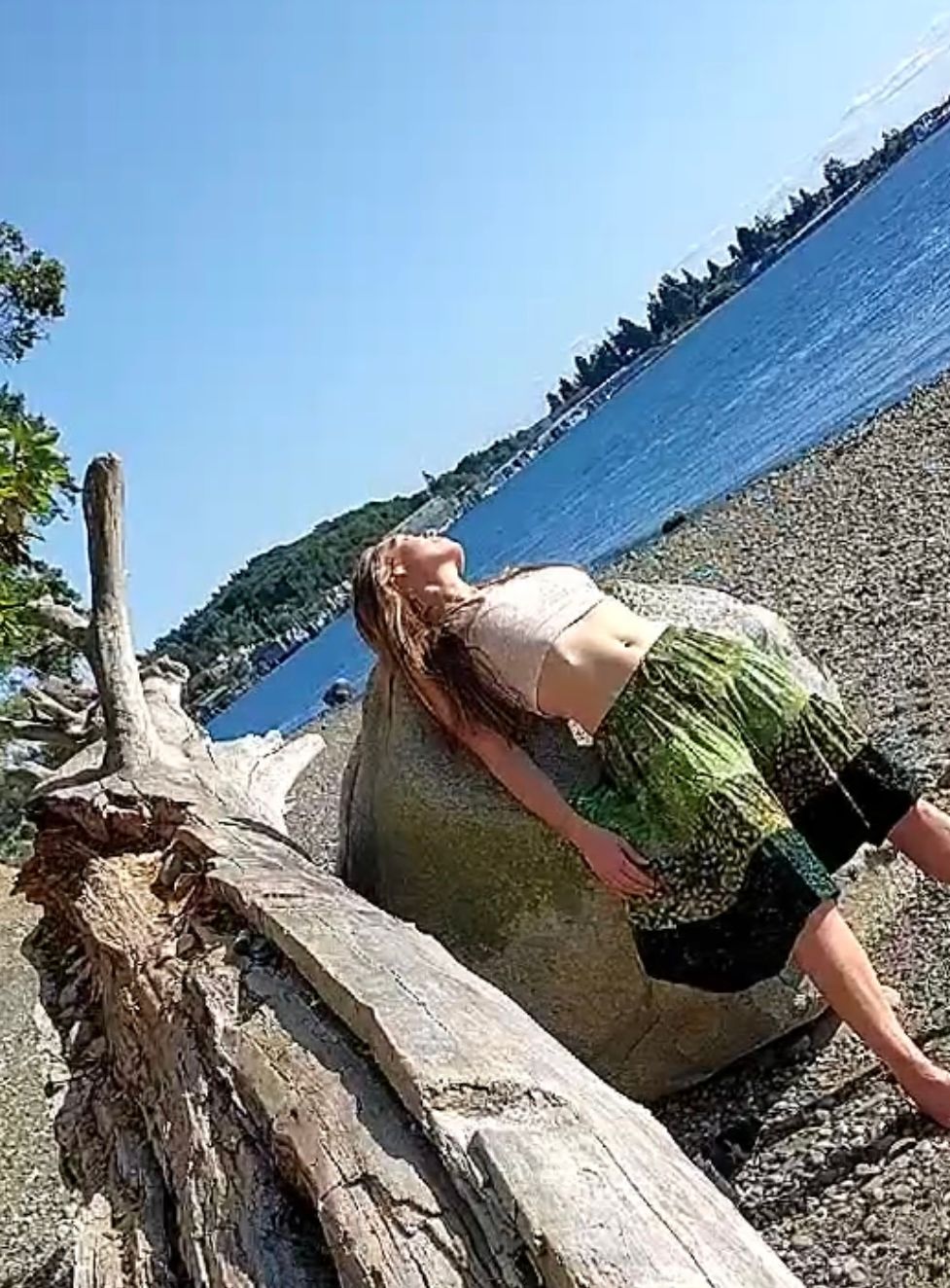Alright – so today we’ve got the honor of introducing you to Jennifer Leigh Harrison. We think you’ll enjoy our conversation, we’ve shared it below.
Jennifer Leigh, looking forward to hearing all of your stories today. Did you always know you wanted to pursue a creative or artistic career? When did you first know?
This answer is hard to pin down. It may have been the time I was in 8th grade and had a big English paper due on something like Grapes of Wrath. I talked the teacher into allowing me to write a several page poem instead of a paper. She had me read it aloud to the class. This wasn’t just a blind request, I had answered essay test questions with poems in class to earn her confidence. In college, I had the privilege of seeing a theater team interpret and perform my work on stage. That moment really sparked my interest in ekphrastic art and collaborative interpretation through different mediums. I recall my friend had to drag me to the performance and I felt a mixture of horror and awe… a poem that was written in one voice had been interpreted as 10 or more. It was fascinating and cool to see, and I also loved how unattached from the work I felt once it went in a new creative direction. This formed some of the foundation of how I collaborate today, and how I wish to feel when exchanging ideas with others and sharing space for expression and meaning. I do think whatever it is we are creating needs to go through an internal process of gestation toward real embodiment.
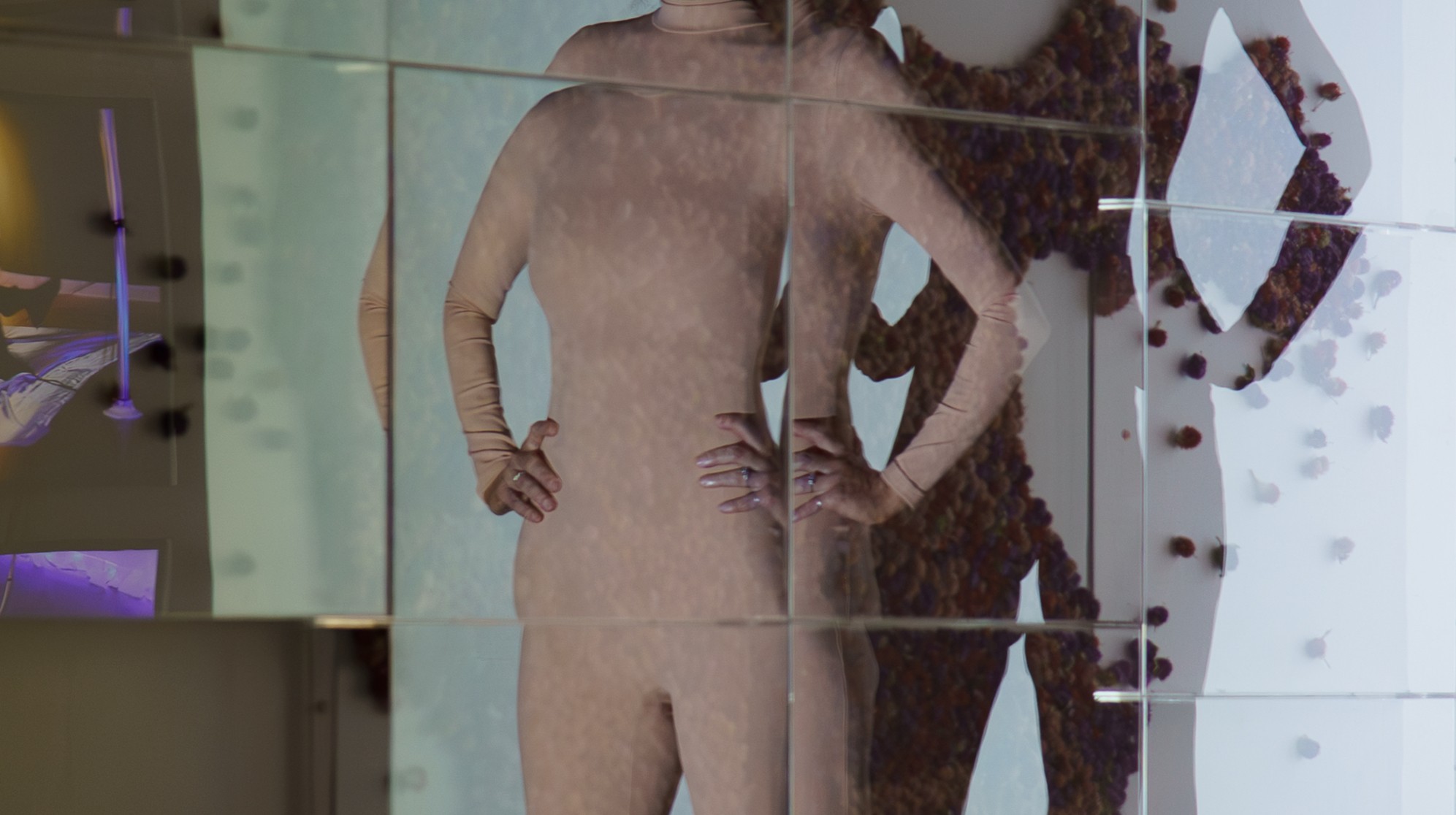
Great, appreciate you sharing that with us. Before we ask you to share more of your insights, can you take a moment to introduce yourself and how you got to where you are today to our readers.
I am an interdisciplinary artist, which for me means I attempt to blur the lines between painting, sculpture, dance, movement, poetry, sound, performance– all in the interest of an embodied practice of expression. This is certainly connected to my somatic work as a trauma therapist. My paintings are abstract and an embodied form of expression where I do my work entirely on the floor, using my whole body with the intention of getting into my body and out of my head, not unlike some of the trauma work I do with people who have learned to leave their body and rely more on their intellect. I find overthinking, or thinking is a vehicle out of authentic self expression and gets in the way of a project becoming what it is meant to be. This is not unlike some of the skill we learn in traditional Buddhist meditation in honing the art of being present, or at one with a moment. We are taught to treat thoughts like clouds in the sky, just passing by, and to come back to the present moment with whatever arises. The breath. So in some ways, my art is also a meditation of space, of feeling, of something becoming what it is meant to be. This is essentially an act of discovery. My work has been described as excavating the human condition, as I am fond of uncovering and revealing what is underneath a story, an image, a movement. I do like how abstraction allows room for interpretation, projection, and misunderstanding, which lies at the core of my experience as a human being. Often there are multiple ways to understand a situation, an expression, and each take allows for a new layer of meaning. That is highly intentional and enjoyable. If things really work out with a project, I also organize community around central themes that tie social justice advocacy to my art.
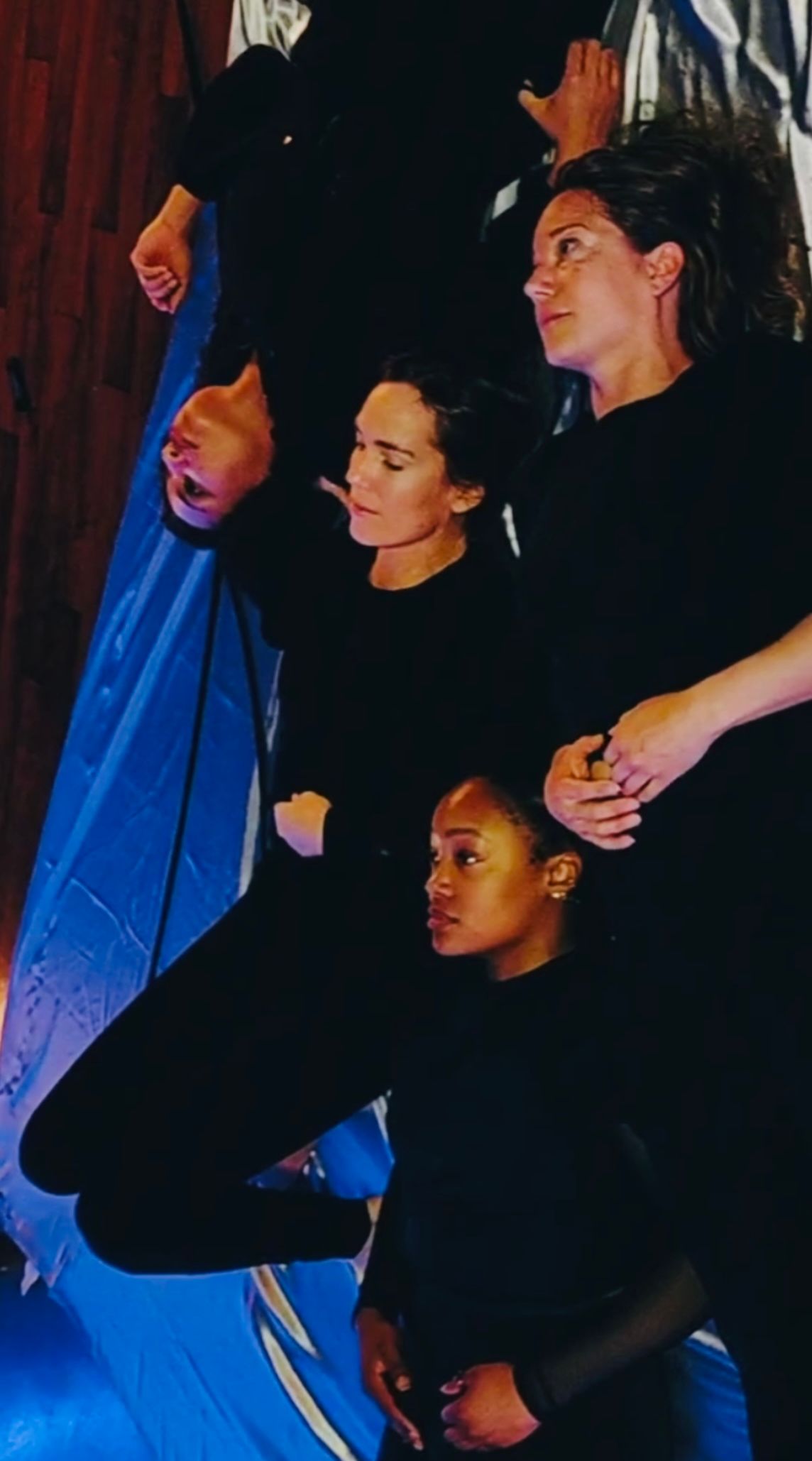
Is there something you think non-creatives will struggle to understand about your journey as a creative?
I do not think there is such a thing as a “non-creative”– we all have imagination, which is a fundamental and resilient part of our vitality as conscious beings. I do think creativity is activating and connecting with one’s imagination. Some of us have trained that muscle, others have not. Creativity can be as simple as choosing a yellow bowl to eat your cheerios in versus a red bowl. I grew up with a mother who was interested in integrating arts into the daily lives of people who did not have the access or the privilege to discover art themselves. We can understand this from the theoretical perspective of living in poverty– that having room and time for imaginative play is a privilege that most of us take for granted. When you’re just trying to survive, there is often no intellectual, physical or emotional space to make art. Of course lots of art is born out of suffering, but for many survival is a series of exhaustions from childcare to working overtime. Kids in my mother’s art class or her one-time drop ins would often say later in their adulthood: “Your mothers art room was the most magical place and my favorite place to be as a kid. I’ve never forgotten how I felt being there. It was amazing!” I would say my mother, with her love and passion for art and expression, was helping to position children back in their seat of joy, and in what Winnicott called the “true self” full of spontaneity and authenticity in the form of creative expression. Making art was a time they could be themselves. I certainly felt this as a child, it was the one time I was not anxious about what was happening around me in the classroom. For a long time in my adulthood, I told myself and others “I am not an artist” and that stultified my process and delayed my more formal practice as an artist. It was inauthentic and a way I had cut off from myself. So if there is something to say to “non-creatives” to help them understand “creatives” it could be a converstation about getting out of one’s own way, the proverbial coloring outside of the lines to allow something to come forward that is an expression of that moment, whether it be a finger painting, a pinch pot, as a way of connecting to creativity. To free ourselves up to play outside of the rules is a way for the self described non-creative to reapproach their own work differently. To break routine helps shine light on new paths in an old routine, etc. But to answer this on a more personal level, I have felt mostly misunderstood my whole life. When I finally embraced this reality, I created more art, more authentic art. And why? One explanation may be because I stopped caring about being understood and cared more about being true to myself and my own expression. It was freeing, liberating, and way more aligned to who I am.

What’s a lesson you had to unlearn and what’s the backstory?
Continuing with this conversation about authenticity, I grew up in a culture where women are encouraged to be modest, respectable, reserved, to cover up. It wasn’t until my 20s that I started pushing back against and unlearning that through the embodiment of my art. I’d say that’s been a lifetime of unlearning. For example, the first art show I was invited into I was not given a lot of guidelines or restrictions on what I could submit as work. I was already at that time working large-scale and yet, I instinctively “kept it small” by submitting a 4 x 4 inch painting, which was not at all a representation of my work. It was a “play it safe” approach. Looking back that was a missed opportunity, or more importantly an example of me holding myself back. It was inauthentic. This is what I mean about getting out of one’s own way. Whenever I get out of my own way, it is often way closer to what I meant to do, way more uncomfortable, and way more of an achievement in terms of pushing my own boundaries, a subject at the heart of my work as an artist.
Contact Info:
- Website: https://www.jenniferleighharrison.com/
- Instagram: @yellowtantrums
- Youtube: UCwPue6TyTDwN1AIUmomcQgw
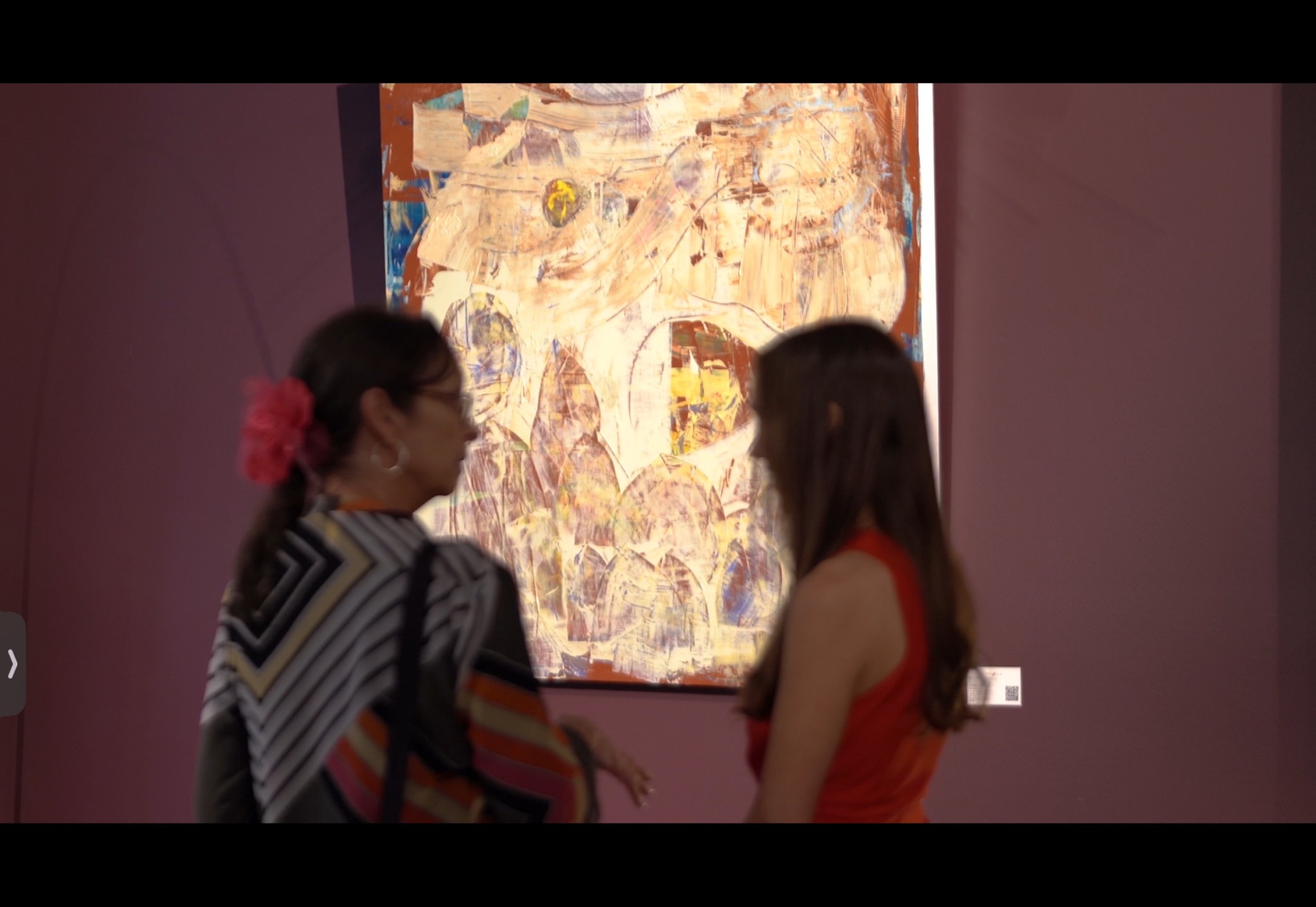
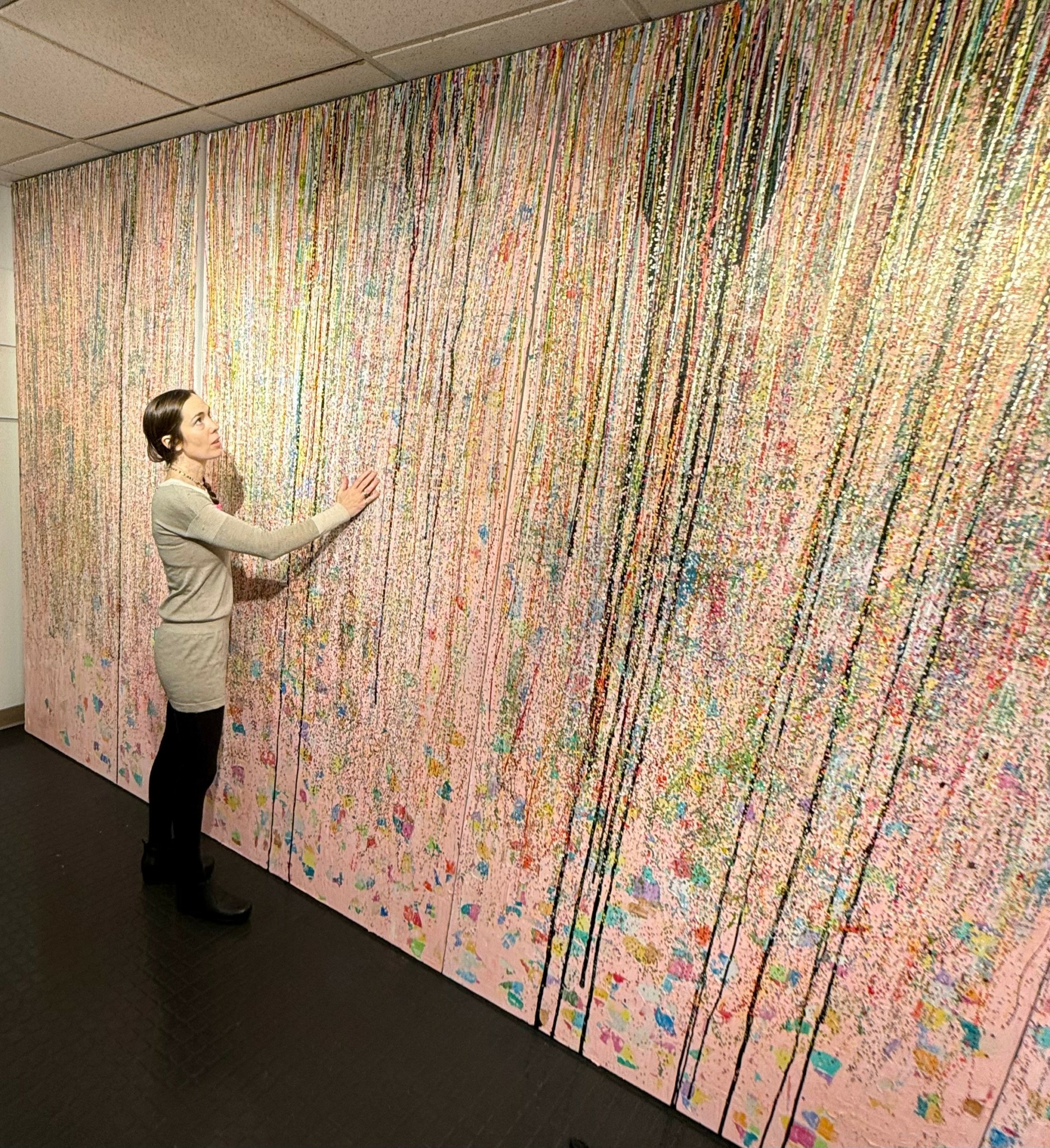
Image Credits
All images with the exception of the personal image and the image of myself touching the wall of painting is credited to Films About Artists
These are all images of works in exhibition. The photo of myself with 3 other women is for a performance called “I’m Trying To Tell You Something” that was a video installation created in 2025.


